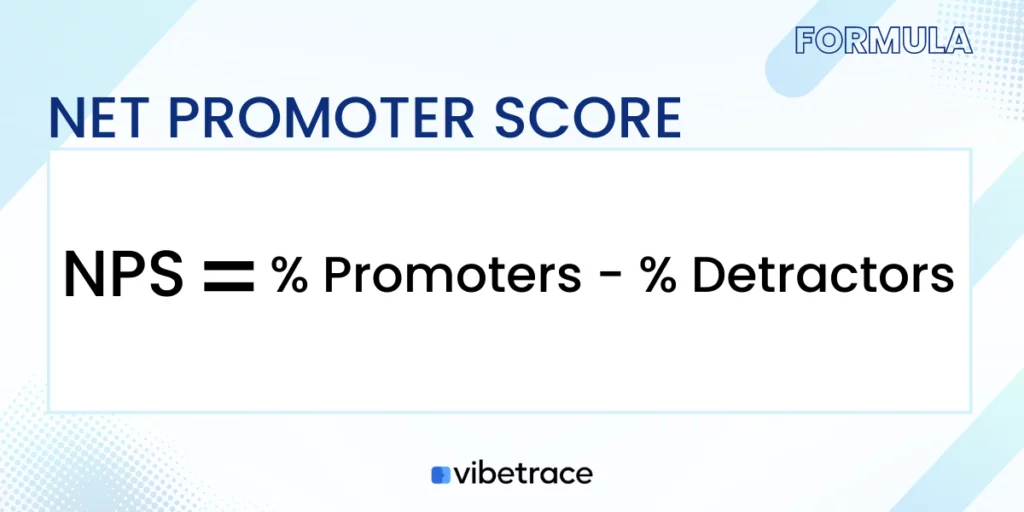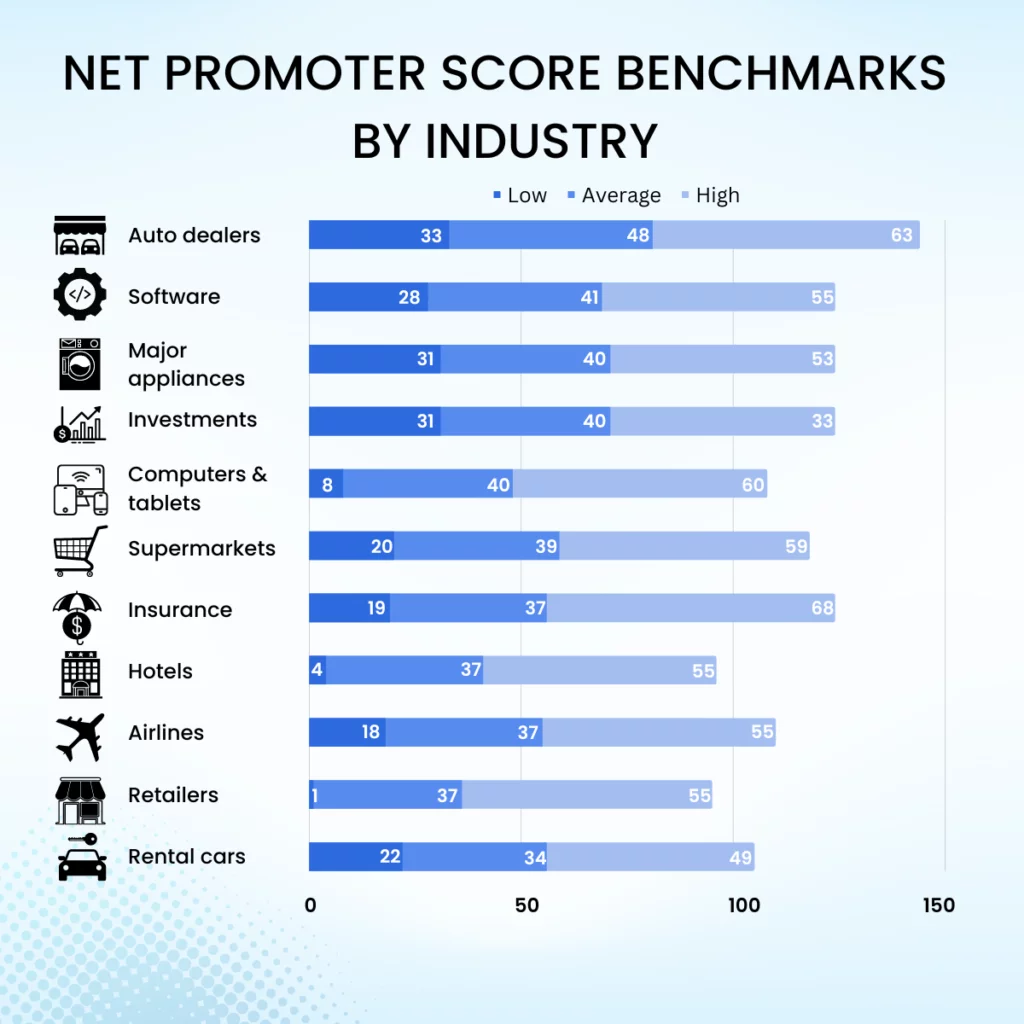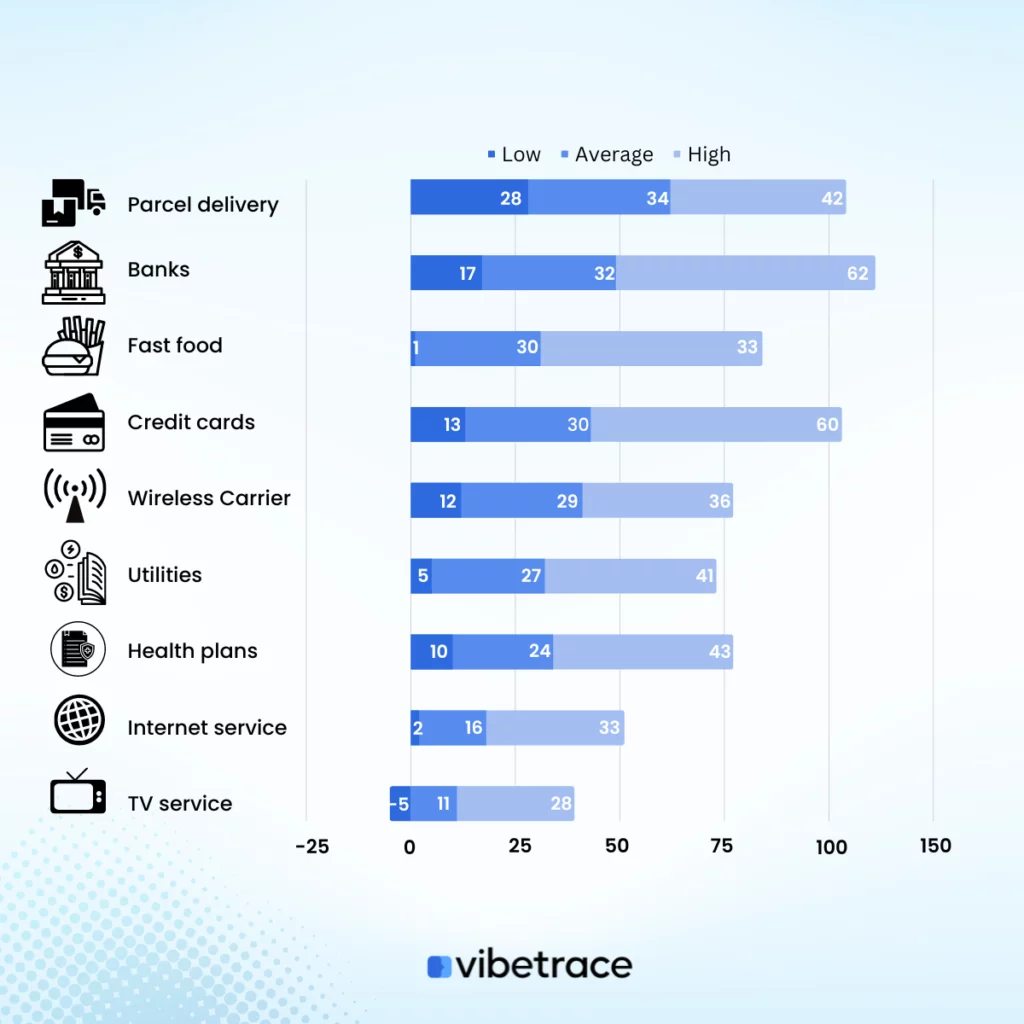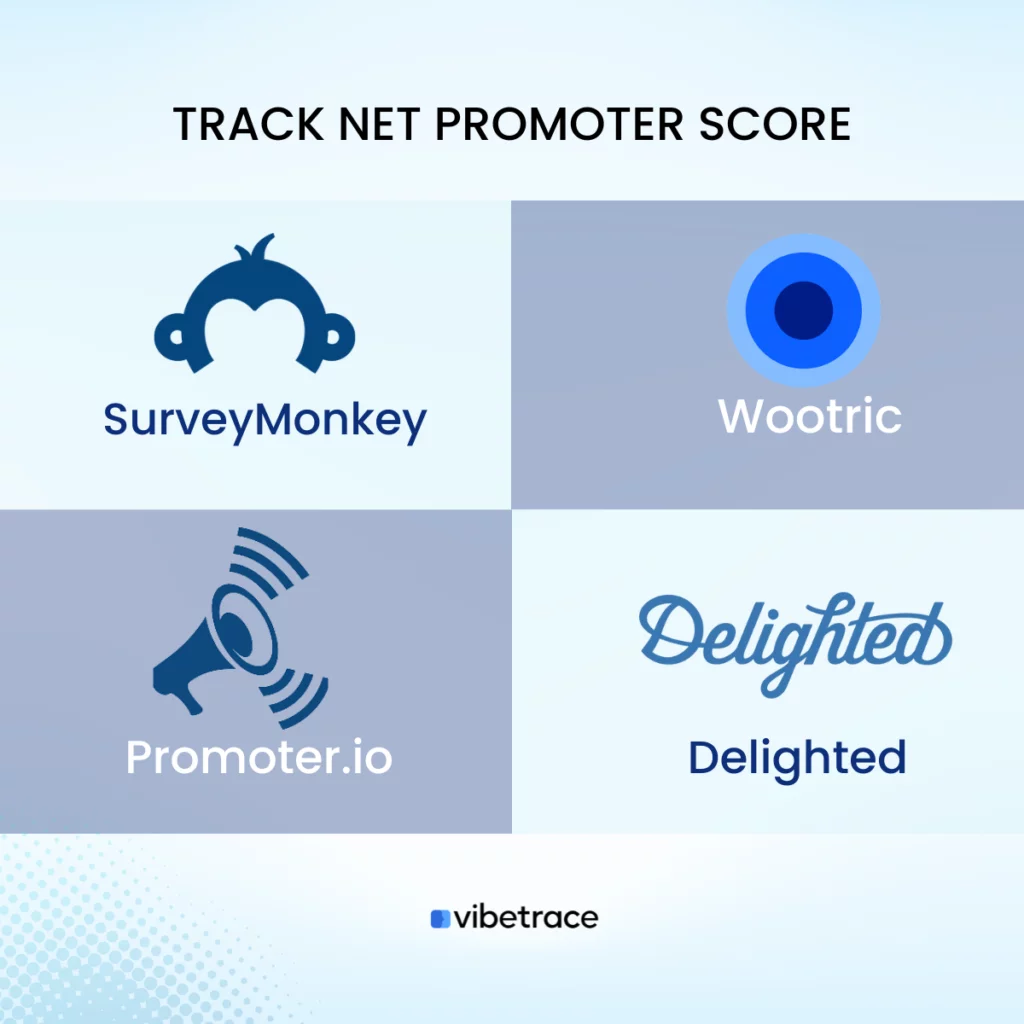Net promoter score is a key metric that measures the experience of your customer journey. It allows you to find how your business is doing from your customer perspective
You’ve probably asked most of your clients multiple times how much they would suggest your service or product, based on their feedback and experience.
This is due to the fact that a bad customer experience frequently has a greater impact on your business than a good one.
It is even easier to persuade them if they know that your current and prior customers had a positive experience with what you offer to address their problem.
Discover more about how to improve your net promoter score to maximize your business.
What is Net Promoter Score?
Definition of Net Promoter Score
Net Promoter Score (NPS) is a customer loyalty and satisfaction metric that measures the likelihood of a customer recommending a company’s products or services to others.
NPS is based on a single-question survey that asks customers to rate, on a scale of 0 to 10, how likely they are to recommend the company to others.
- Customers who respond with a 9 or 10 are considered “promoters” and are more likely to recommend the company.
- Those who respond with a score of 0 to 6 are considered “detractors” and are less likely to recommend the company.
- Customers who respond with a score of 7 or 8 are considered “passives” and are neutral about recommending the company.
NPS is a simple and easy-to-use metric that provides a quick snapshot of customer loyalty and satisfaction.
It can be used to track changes in customer satisfaction over time, benchmark against industry competitors, and identify areas for improvement.
Net Promoter Score Formula

The Net Promoter Score (NPS) is calculated by subtracting the percentage of detractors (customers who respond with a score of 0 to 6) from the percentage of promoters (customers who respond with a score of 9 or 10).
The resulting score can range from -100 to 100.
Net Promoter Score Benchmark by Industry


The table below shows the high, low, and average NPS in each industry along with the companies in the benchmark.
| Industry | Low | Average | High |
| Auto dealers | 33 | 48 | 63 |
| Software | 28 | 41 | 55 |
| Major appliances | 31 | 40 | 53 |
| Investments | 31 | 40 | 53 |
| Computers & tablets | 8 | 40 | 60 |
| Supermarkets | 20 | 39 | 59 |
| Insurance | 19 | 37 | 68 |
| Hotels | 4 | 37 | 55 |
| Airlines | 18 | 37 | 55 |
| Retailers | 1 | 35 | 59 |
| Rental cars | 222 | 34 | 49 |
| Parcel delivery | 28 | 34 | 42 |
| Banks | 17 | 32 | 62 |
| Fast food | 1 | 30 | 53 |
| Credit cards | 13 | 30 | 60 |
| Wireless Carrier | 12 | 29 | 36 |
| Utilities | 5 | 27 | 41 |
| Health plans | 10 | 24 | 43 |
| Internet service | 2 | 16 | 33 |
| TV service | -5 | 11 | 28 |
Delighted provides data on the average Net Promoter Score (NPS) benchmark by industry, which shows the high, low, and average NPS for each industry along with the companies in the benchmark.
The NPS measures the loyalty of customers to a company and ranges from -100 to 100, with higher scores indicating greater loyalty.
The data shows that the highest NPS scores are found in the auto dealers industry, with a low score of 33, an average score of 48, and a high score of 63.
The software industry follows closely behind, with an average score of 41. Major appliances, investments, and computers & tablets industries also have relatively high average NPS scores ranging from 40 to 53.
Other industries such as supermarkets, insurance, hotels, airlines, retailers, rental cars, parcel delivery, and banks have average NPS scores ranging from 32 to 39.
Fast food, credit cards, wireless carriers, utilities, and health plans have relatively low average NPS scores ranging from 24 to 30.
The internet service and TV service industries have the lowest average NPS scores, ranging from 11 to 16.
It is important to note that the benchmark includes several companies within each industry, and the range of NPS scores provides insight into the variation of customer loyalty within each industry.
How to track Net Promoter Score?
Tracking Net Promoter Score (NPS) can be an effective way for your business to measure your customers’ loyalty and gauge their satisfaction levels.

There are several tools available to track Net Promoter Score, including:
Vibetrace: vibetrace offers a complete solution to collect data from your customers, including Net Promoter Score. The platform allows to collect responses from polls/surveys from questions of different types.

SurveyMonkey: SurveyMonkey is a popular survey tool that allows you to create and send NPS surveys to your customers. The platform also offers analytics and reporting features to help you track your NPS over time.
Wootric: Wootric is a customer feedback platform that specializes in NPS tracking. It provides real-time analytics and reporting, as well as tools to help you improve customer loyalty and retention.
Promoter.io: Promoter.io is an NPS software solution that provides a range of features to help you track and improve your score. It includes features such as automated surveys, sentiment analysis, and customer feedback management.
Delighted: Delighted is an NPS tracking and customer feedback platform that allows you to send surveys via email, SMS, or on your website. It provides analytics and reporting tools to help you track your NPS over time and identify trends and patterns in customer feedback.
Ultimately, the best tool for tracking NPS will depend on your specific needs and budget.
It’s important to choose a tool that provides the features and functionality you require to track and improve your score over time.
Do you like this article?
Join our CX for Retail dedicated newsletter!

Stay connected to what’s really important to optimize your digital revenues.
By clicking the button, you accept our Terms & Conditions. Also you will need to confirm your email address.
How often should you check Net Promoter Score?
The frequency of checking Net Promoter Score (NPS) can vary depending on the nature of your business, the size of your customer base, and your goals for tracking NPS. Generally, it’s a good idea to check your NPS regularly to monitor trends and identify changes in customer sentiment.
Here are some common approaches to checking NPS:
Quarterly: Checking NPS once every quarter (i.e., every three months) is a common approach. This frequency allows you to track changes in customer sentiment over time and make adjustments to your strategy based on those trends.
Monthly: If your business operates in a fast-moving industry or experiences frequent changes in customer sentiment, you may want to check NPS once a month. This approach allows you to react quickly to changes in customer sentiment and adjust your strategy accordingly.
Continuously: Some businesses check NPS on a continuous basis, using tools that allow for real-time monitoring and analysis of customer feedback. This approach can be helpful if you have a large customer base or if customer sentiment changes frequently.
Ultimately, the frequency of checking NPS should align with your business goals and resources. It’s important to establish a consistent schedule for checking NPS and using the insights gained to improve your customer experience and drive growth.
Net Promoter Score Calculator
Do you want to calculate your net promoter score? Use our simple calculator below.
Net Promoter Score Calculator
Important Things about Net Promoter Score
Net Promoter Score (NPS) is a popular metric used to measure customer loyalty and satisfaction. Here are some important things to know about NPS:
Based on a single question: “On a scale of 0 to 10, how likely are you to recommend our product/service to a friend or colleague?” Based on their response, customers are classified as detractors (0-6), passives (7-8), or promoters (9-10).
Benchmarking tool: It allows you to compare your customer loyalty and satisfaction to that of your competitors.
Measure customer loyalty and satisfaction. Other metrics, such as customer satisfaction (CSAT) and customer effort score (CES), can provide additional insights into the customer experience.
Most effective when used in conjunction with other customer feedback and data sources. It is important to collect qualitative feedback and conduct data analysis to understand the reasons behind customer sentiment and identify areas for improvement.
Drive improvements in customer experience and business growth. By identifying areas where customers are dissatisfied and addressing those issues, you can increase customer loyalty, retention, and referrals.
Subject to criticism. Some have argued that it oversimplifies the customer experience and fails to capture the complexity of customer sentiment.
Overall, NPS is a valuable tool for measuring customer loyalty and satisfaction, but it should be used in conjunction with other metrics and data sources to gain a comprehensive understanding of the customer experience.
Metrics related to Net Promoter Score
There are several other metrics that are closely related to the Net Promoter Score (NPS) and should be considered when evaluating the performance of a business:
Customer Satisfaction Score
The measure of how satisfied customers are with a company’s products or services.
Customer Effort Score
The measure of the ease with which customers can use your product or service, or complete a specific task.
Vibetrace is a customer engagement platform that can provide your business with a range of tools to help you optimize your Net Promoter Score (NPS) and improve overall customer satisfaction and loyalty levels.
In fact, Vibetrace provides businesses with detailed analytics and reporting tools that can be used to track NPS scores over time and identify trends in customer satisfaction levels.
This can help you make data-driven decisions to improve your customer experience and optimize their NPS.
Join our email list today and experience the full potential of our email marketing automation platform to enhance your campaigns.

